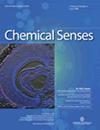使用机器学习预测慢性鼻窦炎的嗅觉丧失
IF 2.8
4区 心理学
Q1 BEHAVIORAL SCIENCES
引用次数: 5
摘要
目的比较基于机器学习(ML)的预测分析方法与传统逻辑回归方法在慢性鼻窦炎(CRS- od)嗅觉功能障碍分类中的差异,并在一项大型多机构难治性CRS患者队列中确定预测因素。方法入选一项前瞻性、多机构、观察性队列研究的成年CRS患者,使用嗅觉识别测试(SIT)或简短SIT (bSIT)评估基线CRS- od。比较了四种不同的ML方法对CRS正态性和CRS- od的传统逻辑回归分类。结果在2011年4月至2015年7月期间收集了611名符合纳入标准的研究参与者的数据。34%的入组患者在客观测试中表现出嗅觉丧失。CRS正常者和嗅觉丧失者之间的差异包括客观疾病测量(CT和内窥镜评分)、年龄、性别、既往手术、社会经济地位、类固醇使用、息肉存在、哮喘和阿司匹林敏感性。大多数机器学习方法在预测能力方面优于传统的逻辑回归。最重要的预测因素包括文献中报道的已知因素,以及一些社会经济因素。结论嗅觉功能障碍在多中心的难治性CRS患者中是一个可变的现象。ML方法在CRS中正常嗅觉障碍与嗅觉丧失的分类中优于传统的逻辑回归,并且能够将许多风险因素纳入预测模型。这些结果对鼻窦疾病继发低血症的基础科学和临床研究具有重要意义,鼻窦疾病是普通人群中持续性嗅觉丧失的最常见原因。本文章由计算机程序翻译,如有差异,请以英文原文为准。
Predicting Olfactory Loss In Chronic Rhinosinusitis Using Machine Learning
Objective Compare machine learning (ML) based predictive analytics methods compared to traditional logistic regression in classification of olfactory dysfunction in chronic rhinosinusitis (CRS-OD), and identify predictors within a large multi-institutional cohort of refractory CRS patients. Methods Adult CRS patients enrolled in a prospective, multi-institutional, observational cohort study were assessed for baseline CRS-OD using a smell identification test (SIT) or brief SIT (bSIT). Four different ML methods were compared to traditional logistic regression for classification of CRS normosmics versus CRS-OD. Results Data were collected for 611 study participants who met inclusion criteria between April 2011 and July 2015. 34% of enrolled patients demonstrated olfactory loss on objective testing. Differences between CRS normosmics and those with smell loss included objective disease measures (CT and endoscopy scores), age, sex, prior surgeries, socioeconomic status, steroid use, polyp presence, asthma, and aspirin sensitivity. Most ML methods outperformed traditional logistic regression in terms of predictive ability. Top predictors include known factors reported in the literature, as well as several socioeconomic factors. Conclusion Olfactory dysfunction is a variable phenomenon within a large multicenter cohort of refractory CRS patients. ML methods outperform traditional logistic regression in classification of normosmia versus smell loss in CRS, and are able to include numerous risk factors into prediction models. These results carry implications for basic science and clinical research in hyposmia secondary to sinonasal disease, the most common cause of persistent olfactory loss in the general population.
求助全文
通过发布文献求助,成功后即可免费获取论文全文。
去求助
来源期刊

Chemical Senses
医学-行为科学
CiteScore
8.60
自引率
2.90%
发文量
25
审稿时长
1 months
期刊介绍:
Chemical Senses publishes original research and review papers on all aspects of chemoreception in both humans and animals. An important part of the journal''s coverage is devoted to techniques and the development and application of new methods for investigating chemoreception and chemosensory structures.
 求助内容:
求助内容: 应助结果提醒方式:
应助结果提醒方式:


